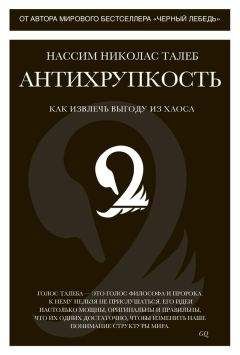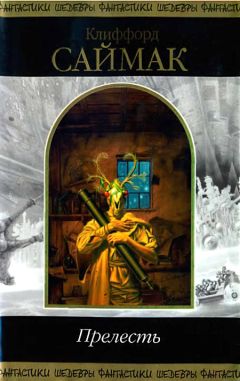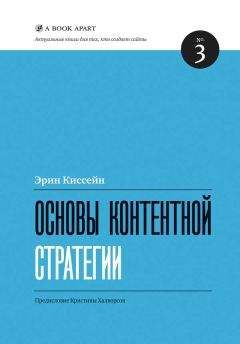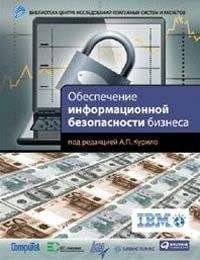Ознакомительная версия.
Roberts, Royston M., 1989, Serendipity: Accidental Discoveries in Science. Wiley.
Roll, R., 1986, “The Hubris Hypothesis of Corporate Takeovers.” Journal of Business 59: 197–216.
Rook, G.A.W., 2011, “Hygiene and Other Early Childhood Influences on the Subsequent Function of the Immune System.” Digestive Diseases 29 (2): 144–153.
Rose, K. A., I. G. Morgan, et al., 2008, “Outdoor Activity Reduces the Prevalence of Myopia in Children.” Ophthalmology 115 (8): 1279–1285.
Rothschild, M., and J. E. Stiglitz, 1970, “Increasing Risk: I. A Definition.” Journal of Economic Theory 2 (3): 225–243.
Rothschild, M., and J. E. Stiglitz, 1971, “Increasing Risk: II. Its Economic Consequences.” Journal of Economic Theory 3 (1): 66–84.
Rubino, F., et al., 2006, “The Mechanism of Diabetes Control After Gastrointestinal Bypass Surgery Reveals a Role of the Proximal Small Intestine in the Pathophysiology of Type 2 Diabetes.” Annals of Surgery 244: 741–749.
Sackett, David L., W. Scott Richardson, William Rosenberg, and R. Brian Haynes, 1998, Evidence-Based Medicine: How to Practice and Teach EBM. Churchill Livingstone.
Safdie, F., T. Dorff, D. Quinn, L. Fontana, M. Wei, C. Lee, P. Cohen, and V. Longo, 2009, “Fasting and Cancer Treatment in Humans: A Case Series Report.” Aging (Albany, N.Y.), 1 (12): 988.
Salsburg, David, 2001, The Lady Tasting Tea: How Statistics Revolutionized Science in the Twentieth Century. Freemen.
Sandis, Constantine, 2012, The Things We Do and Why We Do Them. London: Palgrave Macmillan.
Scanu, A. M., and C. Edelstein, 2008, “HDL: Bridging Past and Present with a Look at the Future.” FASEB Journal 22 (12): 4044–4054.
Schlumberger, M. J., 1998, “Papillary and Follicular Thyroid Carcinoma,” New England Journal of Medicine 338 (5): 297–306.
Schnohr, P., J. L. Marott, et al., 2011, “Intensity Versus Duration of Cycling: Impact on All-Cause and Coronary Heart Disease Mortality: The Copenhagen City Heart Study.” European Journal of Cardiovascular Prevention & Rehabilitation.
Schon, Donald, 1983, The Reflective Practitioner: How Professionals Think in Action. Basic Books.
Schumacher, E. F., 1973, Small Is Beautiful: A Study of Economics as if People Mattered. London: Blond & Briggs.
Schumpeter, Joseph A., 1942, Capitalism, Socialism and Democracy. New York: Harper and Brothers. 5th ed., London: George Allen and Unwin, 1976.
Schumpeter, Joseph A., 1994, History of Economic Analysis. Oxford: Oxford University Press.
Scott, A., K. M. Khan, V. Duronio, and D. A. Hart, 2008, “Mechanotransduction in Human Bone: In Vitro Cellular Physiology That Underpins Bone Changes with Exercise.” Sports Medicine 38 (2): 139–160.
Scott, James C., 1998, Seeing like a State: How Certain Schemes to Improve the Human Condition Have Failed. New Haven: Yale University Press.
Scranton, P., 2006, “Urgency, Uncertainty, and Innovation: Building Jet Engines in Postwar America.” Management & Organizational History 1 (2): 127.
Scranton, P., 2007, “Turbulence and Redesign: Dynamic Innovation and the Dilemmas of US Military Jet Propulsion Development.” European Management Journal 25 (3): 235–248.
Scranton, P., 2009, “The Challenge of Technological Uncertainty.” Technology and Culture 50 (2): 513–518.
Seery, M. D., 2011, “Resilience.” Current Directions in Psychological Science 20 (6): 390–394.
Sestini, P., and L. B. Irving, 2009. “The Need for Expertise and the Scientific Base of Evidence-Based Medicine.” Chest 135 (1): 245.
Shackle, G.L.S., 1992, Epistemics and Economics: A Critique of Economic Doctrines. Transaction Publishers.
Shah, A. K., and D. M. Oppenheimer, 2007, “Easy Does It: The Role of Fluency in Cue Weighting.” Judgment and Decision Making 2 (6): 371–379.
Sharpe, Virginia A., and Alan I. Faden, 1998, Medical Harm: Historical, Conceptual, and Ethical Dimensions of Iatrogenic Illness. Cambridge: Cambridge University Press.
Shelford, April G., 2007, Transforming the Republic of Letters: Pierre-Daniel Huet and European Intellectual Life, 1650–1720. Rochester, N.Y.: University of Rochester Press.
Shimabukuro, M., et al., 1998, “Lipoapoptosis in Beta-Cells of Obese Prediabetic Fa/Fa Rats. Role of Serine Palmitoyltransferase Overexpression.” Journal of Biological Chemistry 273: 32487–32490.
Silverman, William A., 1999, Where’s the Evidence: Debates in Modern Medicine. Oxford: Oxford University Press.
Singer, S. Fred Charles A. S. Hall, Cutler J., 1981, Cleveland: Science, New Series, Vol. 213, No. 4515 (Sep. 25, 1981).
Singh, Simon, and Ernst Edzard, M.D., 2008, Trick or Treatment: The Undeniable Facts About Alternative Medicine. New York: W. W. Norton.
Skyler, J., R. Bergenstal, R. Bonow, J. Buse, P. Deedwania, E. Gale, B. Howard, M. Kirkman, M. Kosiborod, and P. Reaven (2009), “Intensive Glycemic Control and the Prevention of Cardiovascular Events: Implications of the ACCORD, ADVANCE, and VA Diabetes Trials.” Circulation 119 (2): 351–357.
Smith, V. L., 2008, Rationality in Economics: Constructivist and Ecological Forms. Cambridge: Cambridge University Press.
Sober, Elliott, 2008, Evidence and Evolution: The Logic Behind Science. Cambridge: Cambridge University Press.
Solomon, L., 1979, “Bone Density in Ageing Caucasian and African Populations.” Lancet 2: 1326–1330.
Sorabji, Richard, 2000, Emotion and Peace of Mind: From Stoic Agitation to Christian Temptation. Oxford: Oxford University Press.
Sornette, Didier, and L. Knopoff, 1997, “The Paradox of the Expected Time Until the Next Earthquake.” Bulletin of the Seismological Society of America 87 (4): 789–798.
Sornette, Didier, and D. Zajdenweber, 1999, “Economic Returns of Research: The Pareto Law and Its Implications.” The European Physical Journal, B: Condensed Matter and Complex Systems 8 (4): 653–664.
Sornette, Didier, 2003, Why Stock Markets Crash: Critical Events in Complex Financial Systems. Princeton, N.J.: Princeton University Press.
Sornette, Didier, 2004, Critical Phenomena in Natural Sciences: Chaos, Fractals, Self-organization and Disorder: Concepts and Tools, 2nd ed. Berlin and Heidelberg: Springer.
Stanley, J., 2010, “Knowing (How).” Noûs.
Starbuck, W. H., 1992, “Strategizing in the Real World,” in “Technological Foundations of Strategic Management.” Special issue, International Journal of Technology Management 8, no. 1/2.
Starbuck, W. H., 2004, “Why I Stopped Trying to Understand the Real World.” Organizational Studies 25 (7).
Starbuck, W. H., M. L. Barnett, et al., 2008, “Payoffs and Pitfalls of Strategic Learning.” Journal of Economic Behavior & Organization 66 (1): 7–21.
Stasavage, D., 2012, “Was Weber Right? City Autonomy, Political Oligarchy, and the Rise of Europe.” Preprint.
Steinmo, S., 2010, The Evolution of Modern States: Sweden, Japan, and the United States (Cambridge Studies in Comparative Politics). Cambridge University Press.
Steinmo, S., 2012, “Considering Swedish Exceptionalism,” draft, European University Institute.
Sternberg, Robert J., 2003, Wisdom, Intelligence and Creativity Synthesized. Cambridge: Cambridge University Press.
Sternhell, Zeev, 2010, The Anti-Enlightenment Tradition. New Haven: Yale University Press.
Steven, S., et al., 2010, “Dietary Reversal of Type 2 Diabetes Motivated by Research Knowledge.” Diabetic Medicine 27: 724–725.
Stigler, Stephen M., 1990, The History of Statistics: The Measurement of Uncertainty Before 1900. Cambridge, Mass.: The Belknap Press of Harvard University.
Stipp, David, 2010, The Youth Pill. Current.
Stokes, Donald E., 1997, Pasteur’s Quadrant: Basic Science and Technological Innovation. Brookings Institution Press.
Stranahan, A. M., and M. P. Mattson, 2012, “Recruiting Adaptive Cellular Stress Responses for Successful Brain Ageing.” Nature Reviews Neuroscience.
Stroud, Barry, 1984, The Significance of Philosophical Scepticism.Oxford: Oxford University Press.
Stubbart, C. I., and M. B. Knight, 2006, “The Case of the Disappearing Firms: Empirical Evidence and Implications.” Journal of Organizational Behavior 27 (1): 79–100.
Sunstein, Cass, 2009, On Rumors: How Falsehoods Spread, Why We Believe Them, What Can Be Done. Allen Lane.
Taagepera, R., 1978, “Size and Duration of Empires: Growth-Decline Curves, 3000 to 600 B.C.” Social Science Research 7: 180–196.
Tainter, J., 1988, The Collapse of Complex Societies: New Studies in Archaeology. Cambridge: Cambridge University Press.
Taleb, N. N., and M. Blyth, 2011, “The Black Swan of Cairo.” Foreign Affairs 90 (3).
Taleb, N. N., and A. Pilpel, 2007, “Epistemology and Risk Management.” Risk and Regulation 13, Summer.
Taleb, N. N., and C. Tapiero, 2010, “The Risk Externalities of Too Big to Fail.” Physica A: Statistical Physics and Applications.
Taleb, N. N., D. G. Goldstein, and M. Spitznagel, 2009, “The Six Mistakes Executives Make in Risk Management,” Harvard Business Review (October).
Taleb, N. N., 2008, “Infinite Variance and the Problems of Practice.” Complexity 14 (2).
Taleb, N. N., 2009, “Errors, Robustness, and the Fourth Quadrant.” International Journal of Forecasting 25.
Taleb, N. N., 2011, “The Future Has Thicker Tails than the Past: Model Error as Branching Counterfactuals.” Benoît Mandelbrot’s Scientific Memorial, Preprint (see Companion Volume).
Taleb, N. N., and R. Douady, 2012, “A Map and Simple Heuristic to Detect Fragility, Antifragility, and Model Error,” arXiv Preprint.
Taleb, N. N., and G. Martin, 2012a, “How to Avoid Another Crisis,” SIAS Review of International Affairs.
Taleb, N. N., and G. Martin, 2012b, “The Illusion of Thin Tails Under Aggregation (A Reply to Jack Treynor).” Journal of Investment Management.
Taleb, N. N., and D. Goldstein, 2012, “The Problem Is Beyond Psychology: The Real World Is More Random Than Regression Analyses,” International Journal of Forecasting 28 (3): 715–716.
Taleb, N. N., Elie Canetti, Elena Loukoianova, Tidiane Kinda, and Christian Schmieder, 2012, “A New Heuristic Measure of Fragility and Tail Risks: Application to Stress Testing,” IMF Working Paper.
Tatonetti, Nicholas P., et al., 2012, “Data-Driven Prediction of Drug Effects and Interactions.” Science Translational Medicine 4, 125ra31, doi: 10.1126/scitransl med.3003377.
Taubes, G., 2008, Good Calories, Bad Calories: Fats, Carbs, and the Controversial Science of Diet and Health. New York: Anchor Books.
Taubes, G., 2011, Why We Get Fat: And What to Do About It. New York: Anchor Books.
Taylor, R., 2008, “Pathogenesis of Type 2 Diabetes: Tracing the Reverse Route from Cure to Cause.” Diabetologia 51: 1781–1789.
Tedeschi, R. G., and L. G. Calhoun, 1996, “The Posttraumatic Growth Inventory: Measuring the Positive Legacy of Trauma.” Journal of Traumatic Stress 9 (3): 455–471.
Tetlock, Philip E., Richard Ned Lebow, and Geoffrey Parker, eds., 2009, Unmaking the West: “What-If?” Scenarios That Rewrite World History. Ann Arbor: University of Michigan Press.
Thomas, Keith, 1997, Religion and the Decline of Magic. Oxford: Oxford University Press.
Thompson, M. R., 2010, “Reformism vs. Populism in the Philippines.” Journal of Democracy 21 (4): 154–168.
Thorp, E., 1971, “Portfolio Choice and the Kelly Criterion.” Stochastic Models in Finance, 599–619.
Thorp, E., 1998, “The Kelly Criterion in Blackjack, Sports Betting, and the Stock Market.” Finding the Edge: Mathematical Analysis of Casino Games.
Thorsrud, Harald, 2009, Ancient Scepticism. Acumen.
Todd, E., 2010, “The International Risk Governance Council Framework and Its Application to Listeria monocytogenes in Soft Cheese Made from Unpasteurised Milk.” Food Control.
Townsend, A., A. Clark, and K. McGowan, 2010, “Direct Benefits and Genetic Costs of Extrapair Paternity for Female American Crows (Corvus brachyrhynchos).” American Naturalist 175 (1).
Trabelsi, K., K. El Abed, S. R. Stannard, K. Jammoussi, K. M. Zeghal, and A. Hakim, 2012, “Effects of Fed-Versus Fasted-State Aerobic Training During Ramadan on Body Composition and Some Metabolic Parameters in Physically Active Men.” International Journal of Sport Nutrition and Exercise.
Triana, P., 2009, Lecturing Birds on Flying: Can Mathematical Theories Destroy the Financial Markets? Wiley.
Triana, P., 2011, The Number That Killed Us: A Story of Modern Banking, Flawed Mathematics, and a Big Financial Crisis. Wiley.
Trigeorgis, L., 1993, “Real Options and Interactions with Financial Flexibility.” Financial Management, 202–224.
Trigeorgis, L., 1996, Real Options: Managerial Flexibility and Strategy in Resource Allocation. Cambridge, Mass.: The MIT Press.
Trivers, Robert, 2011, The Folly of Fools: The Logic of Deceit and Self-Deception in Human Life. Basic Books.
Turchin, P., 2003, Historical Dynamics: Why States Rise and Fall. Princeton, N.J.: Princeton University Press.
Turchin, P., 2009, “A Theory for Formation of Large Empires.” Journal of Global History 4 (02): 191–217.
Urvoy, Dominique, 1996, Les penseurs libres dans l’Islam classique. Champs Flammarion.
Valdovinos, F., R. Ramos-Jiliberto, et al., 2010, “Consequences of Adaptive Foraging for the Structure and Dynamics of Food Webs.” Ecology Letters 13: 1546–1559.
Vanderbilt, T., 2008a, “The Traffic Guru.” Wilson Quarterly (1976), 32 (3): 26–32.
Ознакомительная версия.




